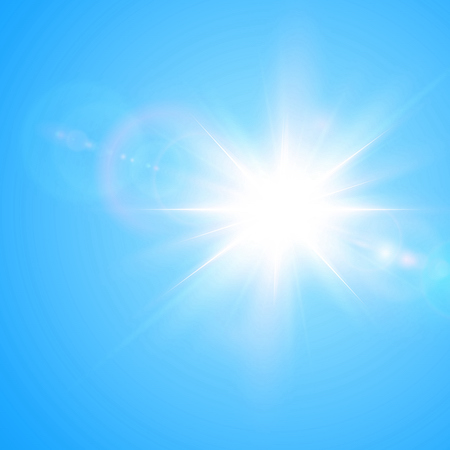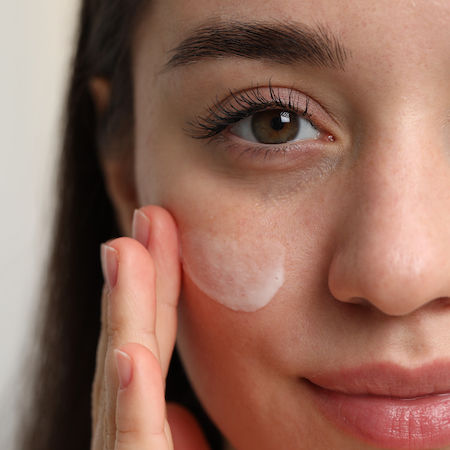Video Interview with Dr. Michael Holick: There is no substitute for the health benefits from sunshine!
Key Points
- To close up this year’s Sunshine Month, we asked Dr. Michael Holick, Ph.D, MD, to share the latest knowledge of and research on the benefits of sunshine exposure. Watch the following special question and answer interview with Dr. Holick, and make note of the key points below.
- Dr. Holick typically recommends covering up the sensitive parts of the skin (face, top of the hands, ears) for those with lighter skin color, but exposing the larger surfaces of the body (arms and legs), without sunscreen, for a reasonable amount of time before covering up make vitamin D and the other biochemicals resulting from sunshine exposure
- “In my opinion, there is minimal risk for being exposed to sensible sun exposure, but there is a lot of upside in improving your overall health and wellbeing.” ~ Dr. Michael Holick
 Today wraps up Sunshine Month 2022, however, this vital information is important to remember year-round. Make sure that you have read each topic, applied it to your own daily lifestyle and routine, and shared what you feel is most important with those around you.
Today wraps up Sunshine Month 2022, however, this vital information is important to remember year-round. Make sure that you have read each topic, applied it to your own daily lifestyle and routine, and shared what you feel is most important with those around you.
The topics featured this month were:
- The “Sunshine Vitamin” – A Marker, Not a Full Replacement for Sunshine Exposure
- What Happens in Your Body When You Are Exposed to Full-Spectrum Sunlight?
- Understanding the Potential Harms of Excessive Sun Exposure and the Role of Skin Pigmentation
- Melanoma Over-diagnosis and the Real Risk of UV Exposure for Skin Cancers
- How to Use the Sun Safely to Make Vitamin D and Benefit Your Health
- Can You Make Enough Vitamin D from Sunshine Alone?
- Can You Use Artificial Sunlight as a Sunshine Supplement?
- Nutrients that Help Protect the Skin from UV Damage
- Diseases Associated with “Sunshine Deficiency”
- “Smiley Curves” Illustrate the Association between UVB Availability and Disease Incidence
- The Relationship between Sunshine Exposure and COVID-19
- How Sunshine has Helped Us Heal throughout History
Dr. Michael Holick Provides a Detailed Review of the Health Benefits from Sensible Sunshine Exposure
To close up this year’s Sunshine Month, we asked Dr. Michael Holick, Ph.D, MD, to share the latest knowledge of and research on the benefits of sunshine exposure. Watch the following special question and answer interview with Dr. Holick, and make note of the key points below.
About Dr. Holick’s Background in Vitamin D & Sunshine Research
- Dr. Holick has been researching vitamin D since 1969
- He was the first to identify the major circulating form of vitamin D in human blood as 25-hydroxyvitamin D3, also known as 25(OH)D3
He isolated and identified the active form of vitamin D as 1,25-dihydroxyvitamin D3, determined the mechanism for how vitamin D is synthesized in the skin, and demonstrated the effects of aging, obesity, latitude, seasonal change, sunscreen use, skin pigmentation, and clothing on vitamin D synthesis - He was elected as a Fellow for the American Society of Nutrition (ASN), was inducted into the Orthomolecular Medicine Hall of Fame, and has received many awards including The Linus Pauling Prize in Human Nutrition, The General Clinical Research Center’s Program Award for Excellence in Clinical Research from the National Institutes of Health, and more
“A Key Question to Answer: Why would Mother Nature have us depend on sunlight to produce vitamin D?” ~Dr. Holick
Question #1: In your book “The Vitamin D Solution” you discuss why sun and supplements aren’t the same. You say “If the body could say which method it prefers to get its daily dose of vitamin D, it would hands down give a standing ovation to sunlight sources of vitamin D rather than a bottle.” Can you elaborate on this point for our viewers?
What is the difference to your body in vitamin D made from sun exposure through your skin versus that ingested from vitamin D3 supplements?
Key Points
- About 60% of vitamin D3 taken from supplements becomes bound to vitamin D binding protein, with the rest excreted through the liver and bile
- Vitamin D3 lasts 2-3 times longer when made in skin, and 100% is bound to vitamin D binding protein and utilized by body
- As soon as pre-vitamin D3 is made, it also absorbs UV light and is converted to other photoproducts with their own unique biological properties, possibly playing a role in reducing the risk of skin cancer
Question #2: What other products are created in the body when it is exposed to sunlight, and how are they beneficial to our health?
Key Points
- The sunshine produces different wavelengths of light and radiation that the body is exposed to
- UVA stimulates the release of nitric oxide in the skin cells, and also stimulates an enzyme to make more nitric oxide
- Small doses of carbon monoxide are released by hemoglobin molecules, which acts as a potent vasodilator with a direct effect on the nervous system and anti-inflammatory actions
- The POMC gene in the pituitary is also found in the epidermis; when exposed to sunlight the gene is turned on and is responsible for the stimulation of corticosteroids and beta endorphins
- Sunlight is also responsible for the regulation of the circadian rhythm
- Visible light enters the body cavities and hits the tissues and cells of the organs – there is so much more to learn about what effects that has on our health!
- Red light stimulates fibroblast activity and collagen synthesis, and helps in wound healing
Question #3: What is “sensible sun exposure” – can you please elaborate on what you mean by that?
Key Points
- NEVER BURN- everything in moderation, including the sun
- Chronic, excessive sun exposure can increase the risk of non-melanoma skin cancers; sunburns can increase the risk of melanoma
- Dr. Holick typically recommends covering up the sensitive parts of the skin (face, top of the hands, ears) but exposing the larger surfaces of the body (arms and legs), without sunscreen, for a reasonable amount of time to make vitamin D and the other biochemicals resulting from sunshine exposure
Question #4: Is there any evidence that regular, moderate, “sensible” sun exposure causes melanoma?
Key Points
- There is NO EVIDENCE that regular, moderate, or even occupational sun exposure, increases risk of melanoma
- A study by Lindqvist et al. actually showed that increased sensible sun exposure decreased the risk of many diseases and lengthened the lifespan
Question #5: How much vitamin D can you make in a sun bathing session and what variables affect the amount made?
Key Points
- A minimal erythema dose (MED) is the amount of sunshine exposure that leads to a slight pinkness to the skin 24 hours later
- A healthy adult with whole body exposure to 1 MED makes the equivalent to about 15,000 to 20,000 IU of vitamin D3
- For hunter-gatherers in Africa who wear minimal clothing and are outside all day, resulting blood levels of 25(OH)D were about 40-50 ng/ml, which for them would require about 4000-6000 IU vitamin D per day to maintain
- Melanin acts as a natural sunscreen – more sun exposure causes more melanin to be produced (a tan). More melanin means less vitamin D can be made in the same amount of time (Blacks need more than 10 times longer UVB exposure to make the same amount of vitamin D as Whites)
- Sunscreen should absorb both UVA and UVB radiation – with about 97% absorption with SPF of 30. While this may allow someone to be in the sun 30 times longer, it will block vitamin D production
- Sunscreen use definitely blocks the ability to make vitamin D in the skin – one study showed that farmers who were out all summer but wearing sunscreen were still vitamin D deficient at the end of summertime
With all these factors that affect how much vitamin D someone is able to make from sun exposure, can everyone make 15,000 to 20,000 IU with one MED dose?
Key Point
- Age is also is a factor! Age decreases the amount of the precursor of vitamin D in skin
- A 70 year old makes 25-30% of the vitamin D3 a 20 year old makes
Question #6: You said that vitamin D3 made by sunlight lasts twice as long in the blood as vitamin D3 ingested by diet or supplements. What does this mean in terms of a dose of vitamin D from sunshine versus supplements?
Key Points
- When pre vitamin D3 is made in the skin it is converted slowly and released into the bloodstream over a couple hours
- An oral dose of vitamin D3 is absorbed into gut and goes into blood stream quickly, and is gone within 24 hours (vitamin D3)
Question #7: You also say that you cannot ever get toxic or overdose on vitamin D made from sunshine whereas you can from vitamin D supplements. How and why is that?
Key Points
- While you can get toxic from vitamin D supplements, it takes a lot over a long period of time. Hundreds of thousands of units of vitamin D daily for months to years…
- When sunlight makes pre-vitamin D, it can be converted with additional UV exposure into other molecules after a maximum amount of vitamin D3 has been created
- UV can destroy excess vitamin D3 directly within the external layer of the skin before it has even made it into the bloodstream
- During the summer, don’t stop taking vitamin D supplements!
Question #8: When you add everything up, the risks, especially from non-burning “sensible” sunlight exposure, are small in comparison to the large benefits received from sun exposure – is this true?
Key Points
- Studies on lactating mothers have found that human breast milk has very little, if any, vitamin D. But this is only true if the mom isn’t getting enough vitamin D on a daily basis!
- It makes evolutionary sense that we need sunshine
- Exposure to sunlight plays a very important role throughout life, from pregnancy through adulthood
- Vitamin D regulates gene expression, especially in the immune system – it is vital to our health
Question #9: Do you think vitamin D is the most impactful result of sunshine exposure?
Key Points
- Vitamin D is VITAL, and we know that without it, we get vitamin D deficiency diseases, such as rickets
- Exposure just to fresh air and sunlight seems to improve health
- There is much more to sunlight than UVB, however, still see less risk for disease and death with more UVB and vitamin D, such as seen with the Spanish Flu (higher latitude, less vitamin D = worse outcomes)
Question #10: Is it realistic to think you can get enough vitamin D from sunshine alone? Is supplementing with vitamin D necessary?
Key Points
- It is unrealistic to think you are going to make enough vitamin D from sun exposure alone, all year round
- Most people in the general population don’t get enough, even in the summertime – one large study showed a difference of only 9 ng/ml in vitamin D levels just after summer (when levels should be highest) and just after winter (when levels are lowest)
- Vitamin D screening is especially important for individuals at higher risk of vitamin D deficiency, and at certain life-stages (obese, pregnant, on certain medications, etc.)
- According to Dr. Holick, everyone should be on a vitamin D supplement
Question #11: What is your #1 message to people who may still be hesitant to get into the sun?
Key Points
- We are designed to be in sunlight
- Many of the benefits and biological compounds we get from sunshine exposure we can’t get by taking a supplement! These compounds are free just by being exposed to sunlight
- Stay aware of the factors needed for UVB and vitamin D production; altitude affects UVB availability as well!
- Sensible Sun Exposure IS GOOD FOR YOU
Question #12: Is there anything else you would like to add about the risks and benefits of sunshine exposure?
Key Points
- There is no question that UV exposure induces DNA damage, HOWEVER, there is no accumulation of DNA damage with sensible sun exposure due to the DNA repair enzymes which are also increased upon sunshine exposure
- Sensible, non-burning sunshine exposure results in initial damage followed by increased repair with no long lasting effect…
- “In my opinion, there is minimal risk for being exposed to sensible sun exposure, but there is a lot of upside in improving your overall health and wellbeing.” ~ Dr. Michael Holick
THANK YOU DR. HOLICK!
Want more Information from Dr. Holick? Check out his


